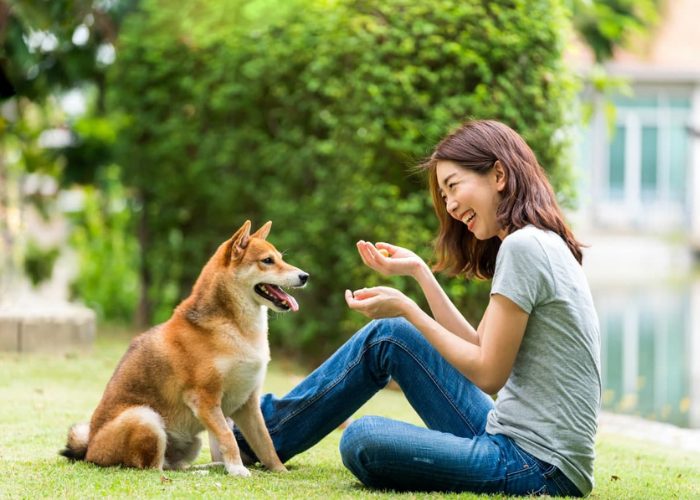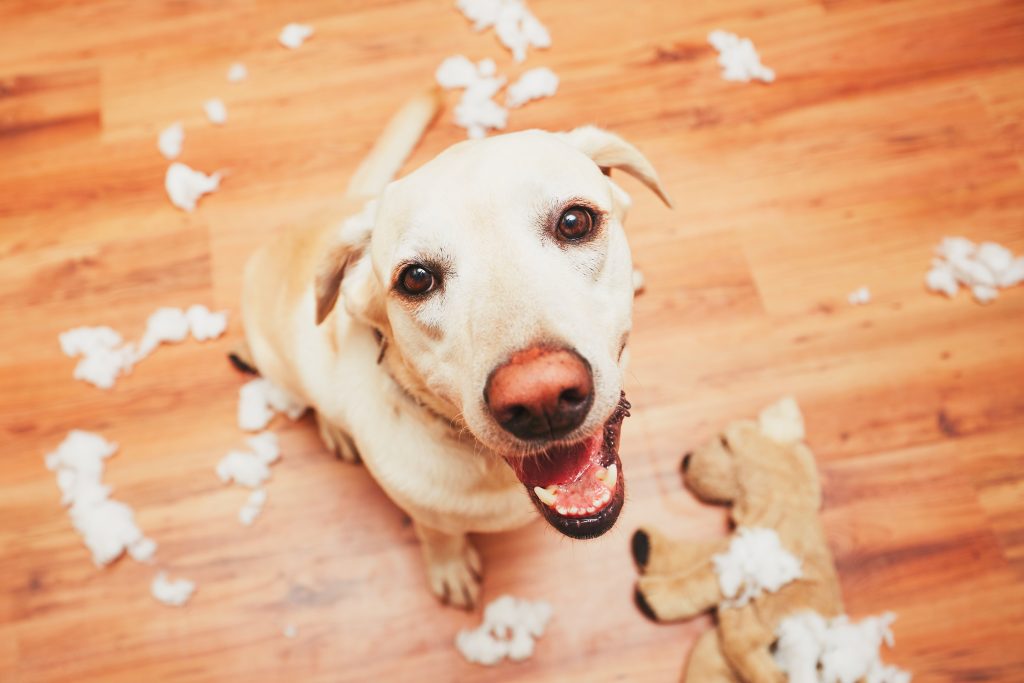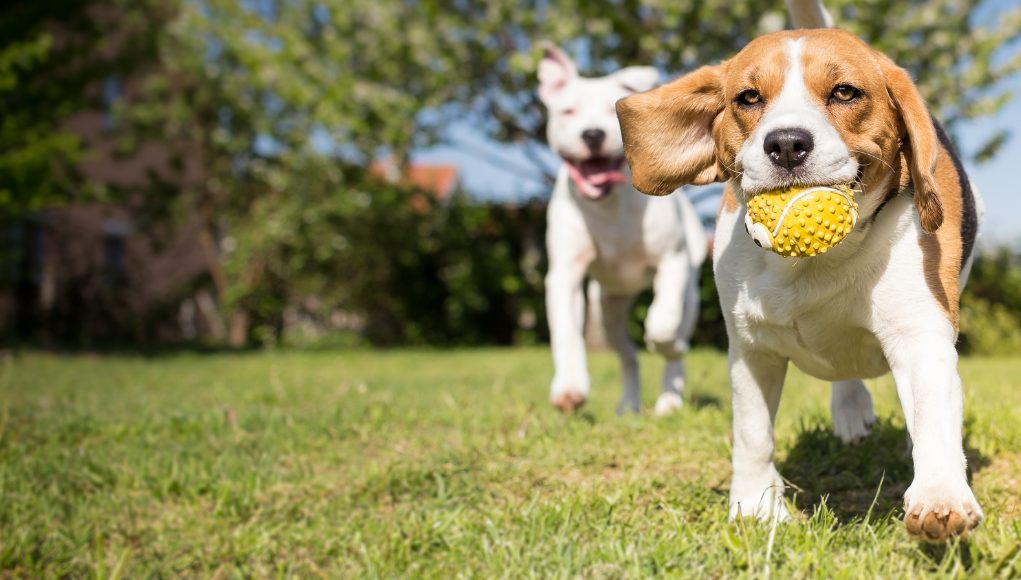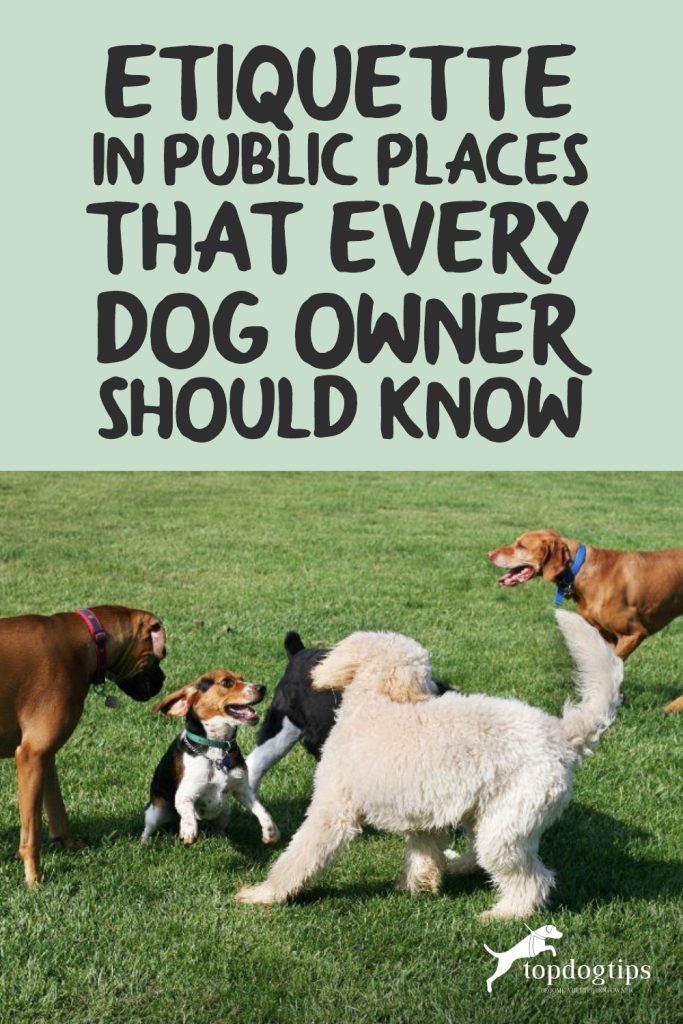Dog etiquette is important to be known by dog owners for the interaction or connectivity of your dogs to their humans or other people.
Most dogs love to bond and spend time with their family. They love it when their owners take them out for a walk around the neighborhood or play with other dogs at the dog park.
Dog lovers feel the same too. It relieves their stress whenever they go out and spend time with their pet.
However, dogs can sometimes be rowdy when they're in public. They can either be mischievous towards other dogs or the dog owners themselves.
When this happens, some people might view the dog as untrained and their owner irresponsible.
Table of Contents
- 15 Dog Etiquette Rules Every Owner Should Know
- 1. Dog Etiquette before Letting Your Dog Go Out
- 2. Dog Etiquette in considering your Dog’s Comfort Level
- 3. Dog Etiquette in Bringing a Clean and Well-Groomed Dog Out
- 4. Dog Etiquette in Feeding Your Dog Before You Go
- 5. Dog Etiquette on Not Trespassing on Other People's Lawns
- 6. Don't Let Your Dog Mark Their Territory
- 7. Always Clean Up After Your Pet
- 8. Keep your Dogs on the Leash, Be Mindful of the Leash Laws
- 9. Don't Let Your Dogs Play While On Their Leash
- 10. Keep your Dog's Greeting Quick and Positive
- 11. Implement a “No Jumping” Policy
- 12. Be Respectful; Only Let Your Dog Greet A Stranger If They Ask
- 13. Pay Attention: Always Keep an Eye on Your Dog
- 14. If Your Dog Destroys Someone’s Else’s Property, Own Up To It
- 15. Understanding That Some Barking is Appropriate While Some Are Not
- Conclusion
Although this might not be true, owners like us have no control over our dogs in public, especially when they never went through proper etiquette training.
Listed below are 15 dog etiquette rules to teach your furry friend. Follow these guidelines to ensure a “pawsitive” experience with your four-legged whenever you're out in public.

15 Dog Etiquette Rules Every Owner Should Know
1. Dog Etiquette before Letting Your Dog Go Out
There are three things you need to remember when you are planning to go out with your dog.
First, you need to make sure that they have been vaccinated up-to-date. This method is to ensure your dog's safety and everyone else's.
You wouldn't want your dog to acquire any potential illness in public or harm any dogs or pet owners while playing.
Secondly, keep your dog's body tick or flea-free. It might cause discomfort and be worrisome to other dog owners if they learn that a pest-infected dog is playing with their furry friends.
Lastly, ensure that your dog is spayed or neutered before going out. Spaying or neutering your pet guarantees other pet owners that they won't be having an accidental pregnancy with their female Fido.

2. Dog Etiquette in considering your Dog’s Comfort Level
Before letting a stranger pet your dog, think about the things your dog might feel when you do so.
Do they feel comfortable, safe, and welcoming when others are petting them? Or do they feel out of place, insecure, and vulnerable?
Bustling loud events and places may make your dog feel uneasy and stressed; thus, you must take note if they are unwell.
However, if your dogs are eager and ready to interact with others, closely monitor them to make sure that they're comfortable and happy while playing. Nonetheless, you must still maintain control over your dog, just if they get overly playful with everyone.
If your dog is shy, timid, and doesn't interact well, you have to reassure them that there's nothing to fear. Dogs slowly become confident when their human companions reassure them repeatedly.

3. Dog Etiquette in Bringing a Clean and Well-Groomed Dog Out
Before taking your dog out for a short walk, or any long trips, ensure that they are clean and well-groomed.
Carry extra necessities for your canine, like extra wipes, diapers, and sanitary, especially when you go to public places like parks, malls, restaurants, or hotels.
Pets can be a real mess along the way—they can be muddy, dusty, or grubby during your outing, and you wouldn't want that.
These things are inevitable; thus, it's essential to bring extra necessities to clean up after your dog.

4. Dog Etiquette in Feeding Your Dog Before You Go
Imagine you are in your dog's shoes. You are starving and pretty much thirsty from all the activities you've had for that day.
What would you feel if you see your owner eating a nice plate of carbs or drinking an ice-cold beverage?
Although dogs tend to eat less than humans do, they still need to eat every chance they get to produce more energy.
That's why it's essential to feed your dog before taking them out in public places or even giving them little snacks or treats during your outing.
If you plan to go out with them to restaurants or resto-bars, keep them occupied by bringing their favorite food-dispensing toy or chew bone toy.
This method will help you to eat in peace with your friends or loved ones.
Lastly, don’t allow your dog to eat on the same plate or utensils that you are eating from. It’s not only an unsightly scene for other people, but it is also unhygienic.

5. Dog Etiquette on Not Trespassing on Other People's Lawns
Not everyone loves your dog as much as you do. Furthermore, not all dog owners have “dog-friendly” lawns.
Some of them may be grumpy or ill-tempered.
However, even if your neighbors are warm and pleasant, allowing your dog to walk on their lawn or garden is still a big NO. This behavior can only create a bad reputation for you and your dog.
For a harmonious relationship with your community, train your dog not to trod along or run around someone else's space. Treat other people's property the way you would like yours treated.

6. Don't Let Your Dog Mark Their Territory
“Marking” is a form of communication between dogs where they spray a small amount of urine in an area.
There are several reasons why dogs do this, but unneutered or unspayed dogs usually do this. Male dogs often mark an area whenever they encounter a female dog.
Furthermore, some dogs do this to indicate their territory, especially when there are new dogs around.
Although these things might be tempting for a dog, a responsible dog owner never lets them mark their territory.
Never let your dog spray in an area that isn't theirs. You have to control this behavior, or else you'll meet a complaint from other dog owners.
You should always bring sanitary necessities such as poop bags, hand sanitizer, and baby wipes during outings.
If you don't want to bother yourself with any of these things, dog diapers can be helpful in many cases.

7. Always Clean Up After Your Pet
Dog feces is not only a ghastly scene that someone might step on, but it poses certain health risks too.
According to the U.S. Environmental Protection Agency (EPA), pet waste isn't a fertilizer; it's a pollutant that harms waterways and carries diseases. Dog waste contains bacteria and parasites, like hookworms and ringworms, that can severely affect dogs and their human companions if sniffed, touched, or ingested.
Although it's already a non-negotiable rule among dog owners, always keep in mind that etiquette should avoid letting your dog defecate anywhere, especially on someone else's property. Don't leave the house without bringing several poop bags, changing pads, and hand sanitizer.
If you feel like your dog needs to relieve themselves, guide them off to a beaten path where they can silently do their business. Quickly discard Fido's waste properly by putting it in a tightly closed poop bag, and tossing it in a designated trash can.
This practice is not just proper pet etiquette—it's in the law. Some states or communities would issue a fine if they caught you not cleaning up after your dog.
Plus, failing to clean up after your pet gives you a bad reputation as a pet owner.

8. Keep your Dogs on the Leash, Be Mindful of the Leash Laws
Unlike you, not everyone finds themselves comfortable when they are around dogs. Thus, it's a common courtesy to keep your dog's leashes attached to them to keep your dog and others safe.
Always keep your dogs close to you, especially when walking, hiking, or running. Unless you and your dog are in a leash-off area (e.g., dog park), keep the leashes short and firm, not extending more than 6 feet in length, to avoid any potential injuries, hazards, or casualties in the future.
Furthermore, most public places have leashes; thus, you must keep in mind to follow and respect them.

9. Don't Let Your Dogs Play While On Their Leash
Following the topic above, dog etiquette ensures that your dogs are off their leash while playing. Keeping their leash on off-leash areas may cause others to trip on them, harming other dogs and their human companions.
Furthermore, by keeping your dogs off their leash, they can develop more confidence and play in many ways they cannot do while they're on their leash.
Nonetheless, it would be best if you still supervise your pet while playing. Teaching your dogs that they can only be off-leash in certain areas will allow them to be aware of their actions and take responsibility for it.

10. Keep your Dog's Greeting Quick and Positive
If ever you'll meet another dog on the street during your walks with your dog, try to observe your dog's body language first.
When meeting, both dogs should be calm and inviting, and this must only be short. Prolonging greetings will only make your dog hyperactive, assuming that their owners are asking them to play.
However, if you are about to meet a dog trying to intimidate you and your pet, slowly pull your dog away and walk to the opposite side of the road.
Body language is an essential part of learning dog etiquette; thus, dogs who are not in the mood will only do you no good.

11. Implement a “No Jumping” Policy
There are times that you may find your dog wanting to jump or pounce over anyone they see.
It may be something that people find endearing due to your dog's friendliness and warm welcome. However, this might not be the case for some people as it is something that they and their pets cannot avoid.
Enforcing the “No Jumping” etiquette policy to your dog will only not teach your dogs to behave themselves, but it will also prevent accidental knock-downs.
A quick way to halt a jumpy greeting is to step in and pull your dog's midpoint leash.

12. Be Respectful; Only Let Your Dog Greet A Stranger If They Ask
Even if you think your dogs are the warmest and friendliest dogs you've ever met, only let your pets welcome a stranger if the stranger allows them to do so.
Not everyone likes to be around pets; even the slightest touch of them makes others cringe.
Therefore, it is essential to respect other people's opinions and preferences. Just because you love your dog doesn't mean that another person will share the same feelings.
Thus, I urge you to ask owners first if it's okay for your dog to approach them or their pets. It's not only etiquette but basic dog-human decency.
Lastly, if you notice your dog feeling stiff and avoiding any interactions, let them be. It only means that they do not wish to gain attention to avoid socialization.

13. Pay Attention: Always Keep an Eye on Your Dog
As a dog owner, you are ultimately responsible for your dog's actions and behaviors. Thus, you must always pay attention when you are out and about with them.
It would be best if you always stayed by their side at all times, careful not to let them wander off the trail or into the street. Training your dog to stop at crosswalks will allow them to learn that crossing it alone will only put them in danger.
Furthermore, getting distracted with your phone or any personal activities will only harm you or your dog. If you want them to socialize with other dogs or other dog owners, you must always prioritize their safety by being physically and mentally present with them at all times.

14. If Your Dog Destroys Someone’s Else’s Property, Own Up To It
As mentioned above, pet owners are ultimately responsible for their pets' actions and behaviors upon adopting them, including unintentionally destroying any property that isn't theirs.
Even if you've trained your dogs well, these mammals are historically and genetically wild. Consequently, they can chew anything from slippers to sofas or dig anywhere they might find their paws suitable.
These circumstances are inevitable. However, if this happens to you, politely ask for the person's forgiveness and replace the destroyed item with the same monetary value.

15. Understanding That Some Barking is Appropriate While Some Are Not
If you're a new fur parent or foster parent, there's a high chance that the first week with your pup will be full of barking or howling. And it's honestly overwhelming.
However, barking or howling is a form of communication between dogs, especially if they're still learning how to do it.
There are times that dogs will bark at certain people because they find them strange or suspicious. Through this behavior, they are warning you to get away from the said person.
Nonetheless, if your dog tends to bark at anyone at any time, then I think it is time to train them not to do so.
There are several training techniques out there that you can use to prevent and control this behavior. Do your research, take advantage of this information, and make a training plan that suits you and your pup.
Conclusion
Spending time with your pup gives you a sense of contentment in a manner that only you and your pet will understand.
Basic dog etiquette is one of the few rules you and your dog need to understand to ensure the safety of everyone. Many of these rules might be uncomfortable at first; however, your dog will eventually learn how to execute them properly through different training tricks and techniques.
Before you attempt to take your dog out and interact with others, try your best to teach them dog etiquette and observe how they act at home, especially when other dogs or people are present.
READ NEXT: Dognapping and Dog Theft – Statistics, Trends, Breeds & Prevention Tips














